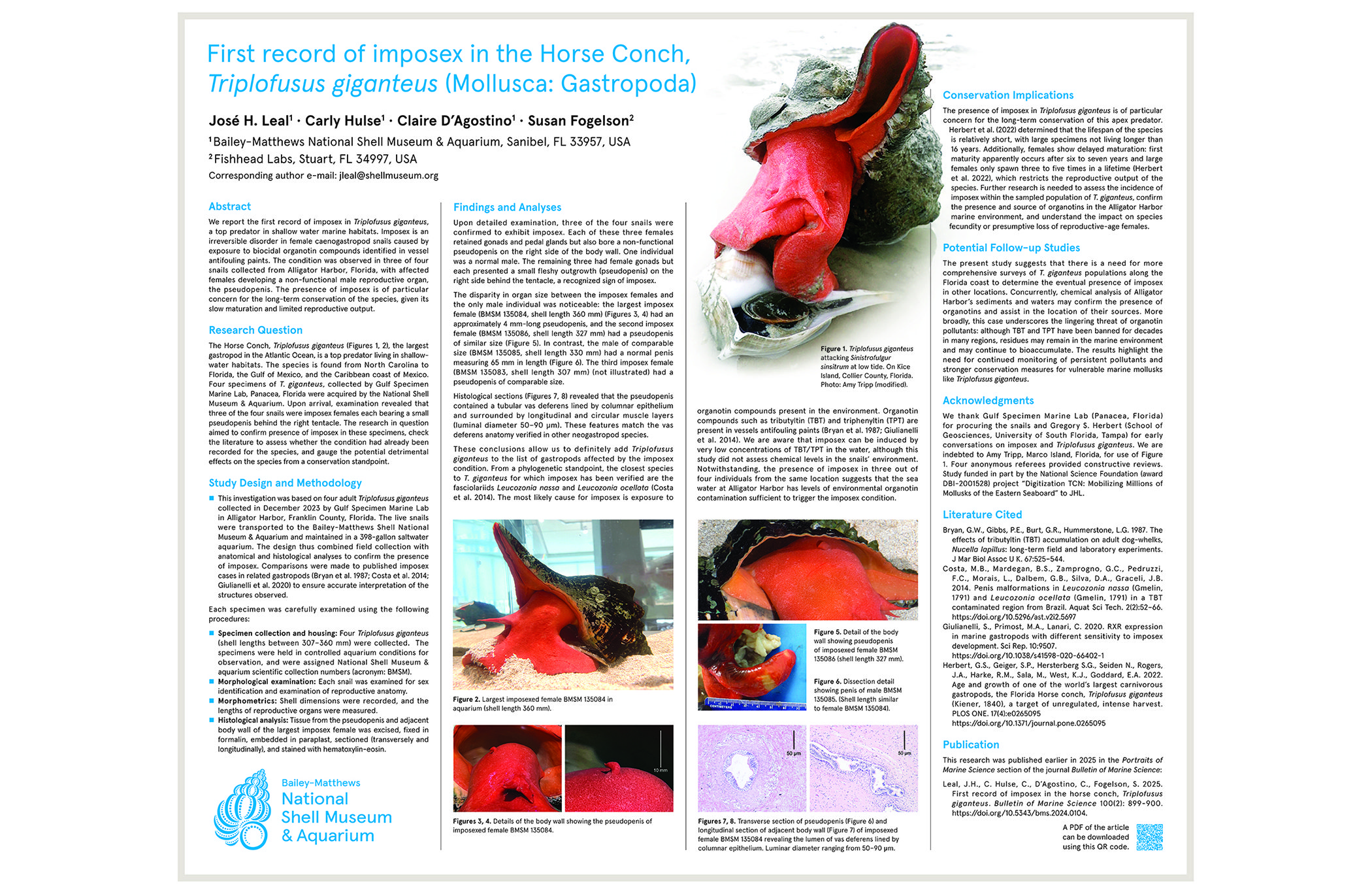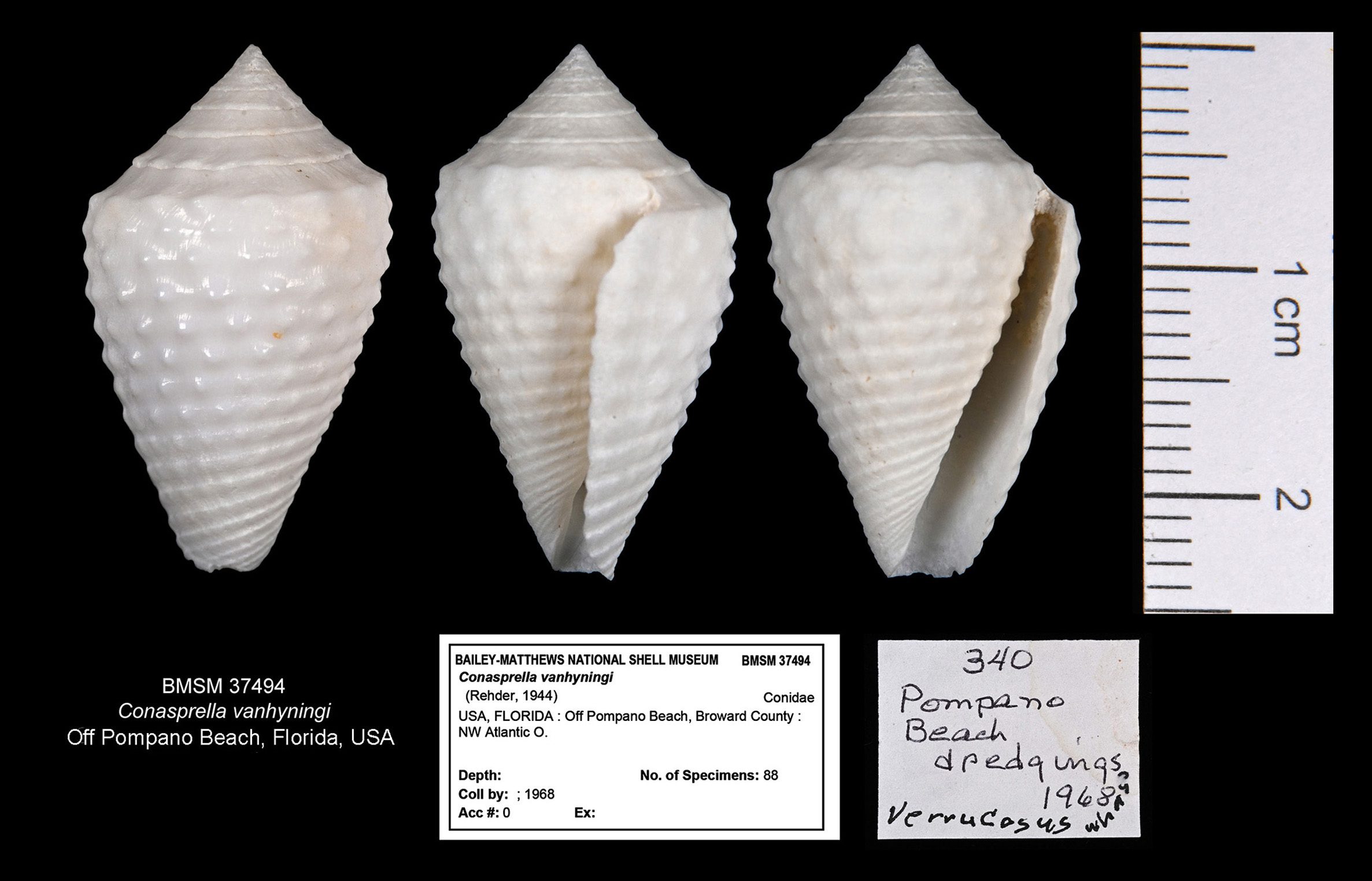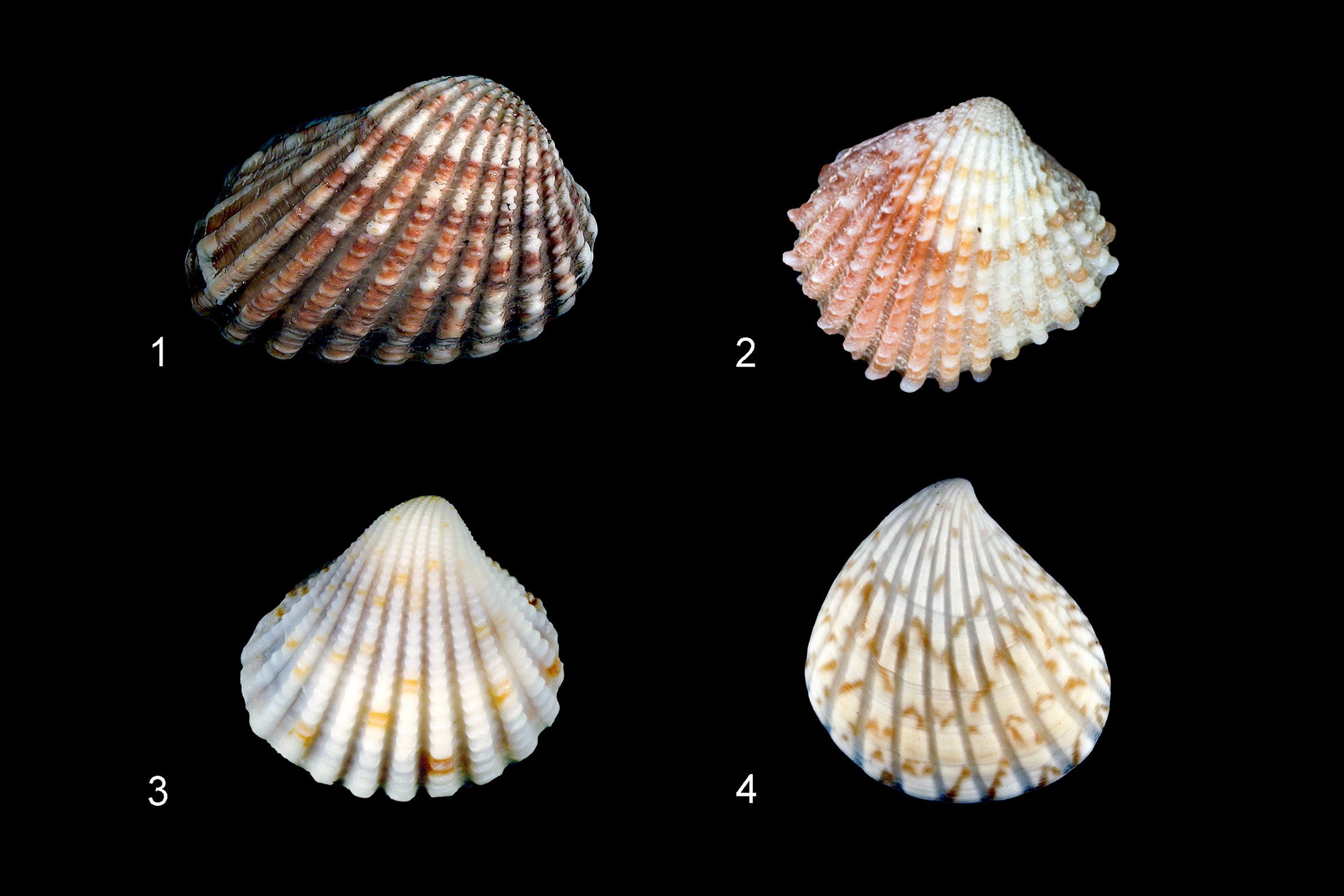The Exquisite False Dial, Spirolaxis centrifuga (Monterosato, 1890) is a delicate and truly attractive species of the sundial snail family Architectonicidae. The species lives in the eastern and western Atlantic Ocean, reaching about 5 mm* in diameter.
 Spirolaxis centrifuga, diameter 4.5 mm. Photos by James F. Kelly.
Spirolaxis centrifuga, diameter 4.5 mm. Photos by James F. Kelly.
As the photo above shows, the Exquisite False Dial shell is normally open-coiled, with successive whorls** not touching each other, yet maintaining regular, proportional distances from the adjacent whorls. Other gastropods with open-coiling are, for instance, some members of the nutmeg family Cancellariidae, such as Extractrix milleri (Burch, 1949), from the eastern Pacific Ocean (below).
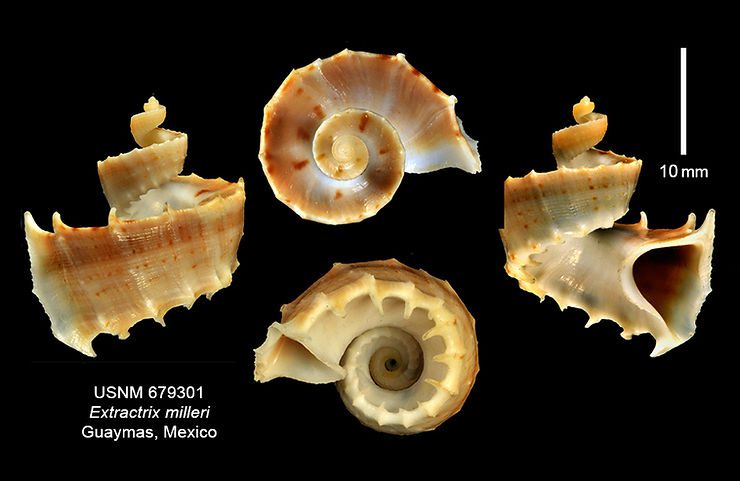 Extractrix milleri, about 25 mm long. Photos courtesy M.G. Harasewych.
Extractrix milleri, about 25 mm long. Photos courtesy M.G. Harasewych.
Some wentletraps (family Epitoniidae) also present open-coiling. This is the case, for instance, of Cycloscala revoluta (Hedley, 1899), from the Indo-West Pacific (below) And even some rare species of land snails, such as Blaesospira echinus infernalis (Torre and Bartsch, 1941) from Cuba, (below) are “open-coilers.” The possible advantages for these species to “wear” open-coiled shells have not yet been fully explored by malacologists (mollusk researchers.)
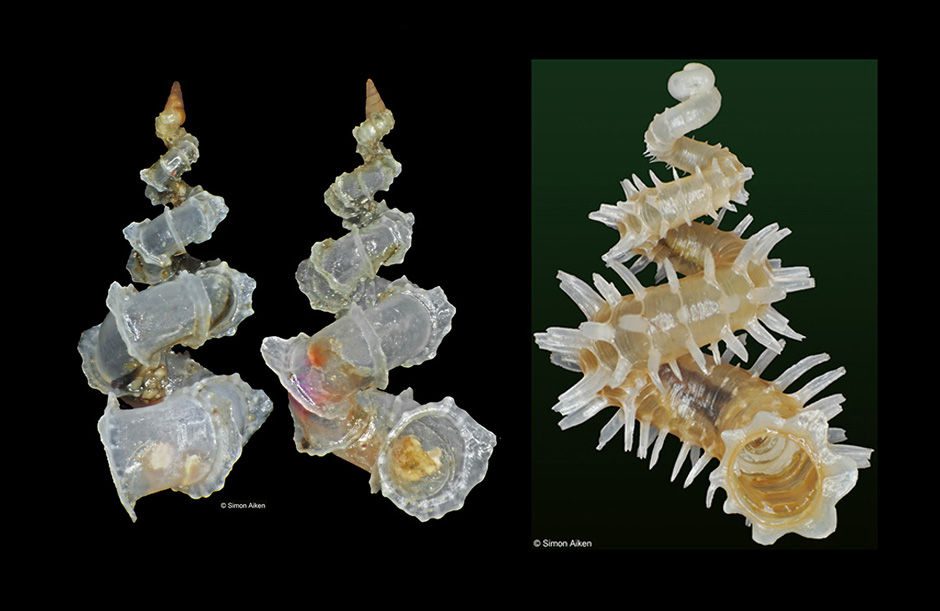 Cycloscala revoluta, 6.6 mm, Philippines; Blaesospira echinus infernalis, Cuba, 9 mm. Photos by Simon Aiken.
Cycloscala revoluta, 6.6 mm, Philippines; Blaesospira echinus infernalis, Cuba, 9 mm. Photos by Simon Aiken.
*One millimeter (1 mm) = 0.04 inch.
**A whorl is one complete shell revolution, or “turn.”
#opencoiled #epitoniidae #cancellariidae #spirolaxiscentrifuga #extractrixmilleri #cycloscalarevoluta #blaesospiraechinus #blaesospiraechinusinfernalis #wentletrap #nutmeg
